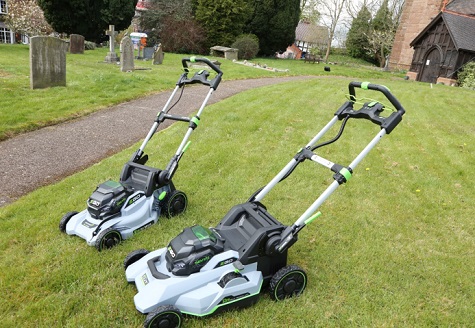I hope you all had a happy Easter. For most of us the weather was bright and sunny with temperatures well into double figures. This spell of warm weather has promoted some much-needed grass growth and recovery for all our natural playing surfaces. April sees the start of the golf, bowls and cricket playing seasons with groundstaff and greenkeepers busy preparing their playing surfaces for the onslaught of a hectic fixture list throughout the next six months.
One contentious issue facing many turf professionals for these sports is what is the recommended Height of Cut (HOC) required for their given sport. Over the years we have seen many debates regarding this subject.

There are recommendations of HOC from various sports governing bodies, however, we must remember these are guidelines only. Over the years these HOC have changed dramatically and in essence are often driven by the expertise of the ground’s professionals and the resources and the cutting quality of the machinery they have at hand.
I remember whilst editor of Pitchcare in 2010 we instigated the now famous 2mm debate that was at held during BTME at Harrogate. This all came about from a couple of articles published by Greg Evans in 2009 Sustainability With Agro and Wuthering Heights. Greg was adamant he could manage a golf course with greens being maintained at around 2mm.

The backbone of his regime would be low cutting heights, frequent verticutting, heavy straight sand dressings and lots of aeration. The greens were immediately taken down from 5mm to 3mm and were put on a fortnightly verticut and sand programme.
However, at the time there were many respected greenkeepers who challenged Greg’s methods and were not convinced that his techniques were sustainable and would lead to increased turf disease and turf stress which over time would be detrimental to turf quality.
However, twelve years on there is still a healthy debate on whether low cutting heights are sustainable. This debate of relevant HOC is also a contentious issue in both bowls and cricket. I recently read an interesting thread on a cricket grounds website, where a member was asking for a recommended HOC for preparing a cricket pitch with someone quoting the ECB TS4 document.
On page nine of the document, under the cricket grounds maintenance and wicket preparation section, it states “For the remaining pre-match days during the course of preparation, mow every day or at least every other day between the popping creases and in combination with light scarification/brushing, progressively lowering the cylinder to the desired height of cut (typically between 3-5mm, (1/8 – 3/16 inches) or as low as possible, without scalping and the surface is not scarred or disturbed.”

The debate that followed was a plethora of groundsmen and volunteer grounds staff posting a range of HOC, ranging between 3-12mm, that they had implemented and the reasons why.
No two grounds are the same
Why I want to talk about this is because there are so many variables to why a given single HOC cannot be prescribed when talking about maintaining a natural turf playing surface.
As we say in the industry, no two grounds are the same. There are far too many variables that come into play that essentially effect the performance of a prepared playing surface.
Just for starters there is the location and topography of the site, including the underlying soils and construction of the facility (green, square, pitch etc). Alongside this is all the variables of the maintenance regimes, resources, machinery, equipment and budgets at hand. Weather will also have a major influence on what can be achieved.
Essentially it boils down to the condition and health of the turf and how well it recovers from play.

In cricket, gone are the days of seeing a nearly all white, bleached playing surface. In recent years we have seen a trend to leave more grass on the pitches to help provide a livelier and more challenging wicket for both the batsman and bowler. We now have county cricket groundsmen preparing wickets with HOC between 6-10mm, with the aim of reducing the stress on the grass plant and its ability to recover after matches while still hoping for the required pace and carry expected by the players.
We also have more aides, devices, appropriate machinery and crucially a greater understanding of soil science and plant biology to help us make better informed decisions on what is the correct HOC and maintenance regime to deliver a sustainable natural turf playing for the given sports surfaces we manage.
On test
While on the subject of mowing, last week I took loan of two EGO battery powered rotary mowers and a strimmer for testing. I was sent their LM2135E-SP - (52cm) Kit, with rapid charger and 7.5Ah battery, the LM1702E-SP(42cm) Kit – with standard charger and 4.0Ah battery and finally a strimmer ST1510E and 2.5 Ah battery. I soon got on the case and with a friend, John Breeze, both using the machinery to cut the grass at Childs Ercall Church.

Over the next couple of weeks, I will be testing the performance and handling of these machines over several different sites with the view to producing a report for TurfPro – but I must say my first impressions so far have been positive.